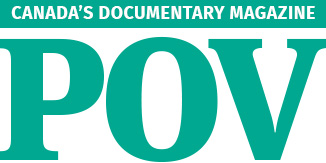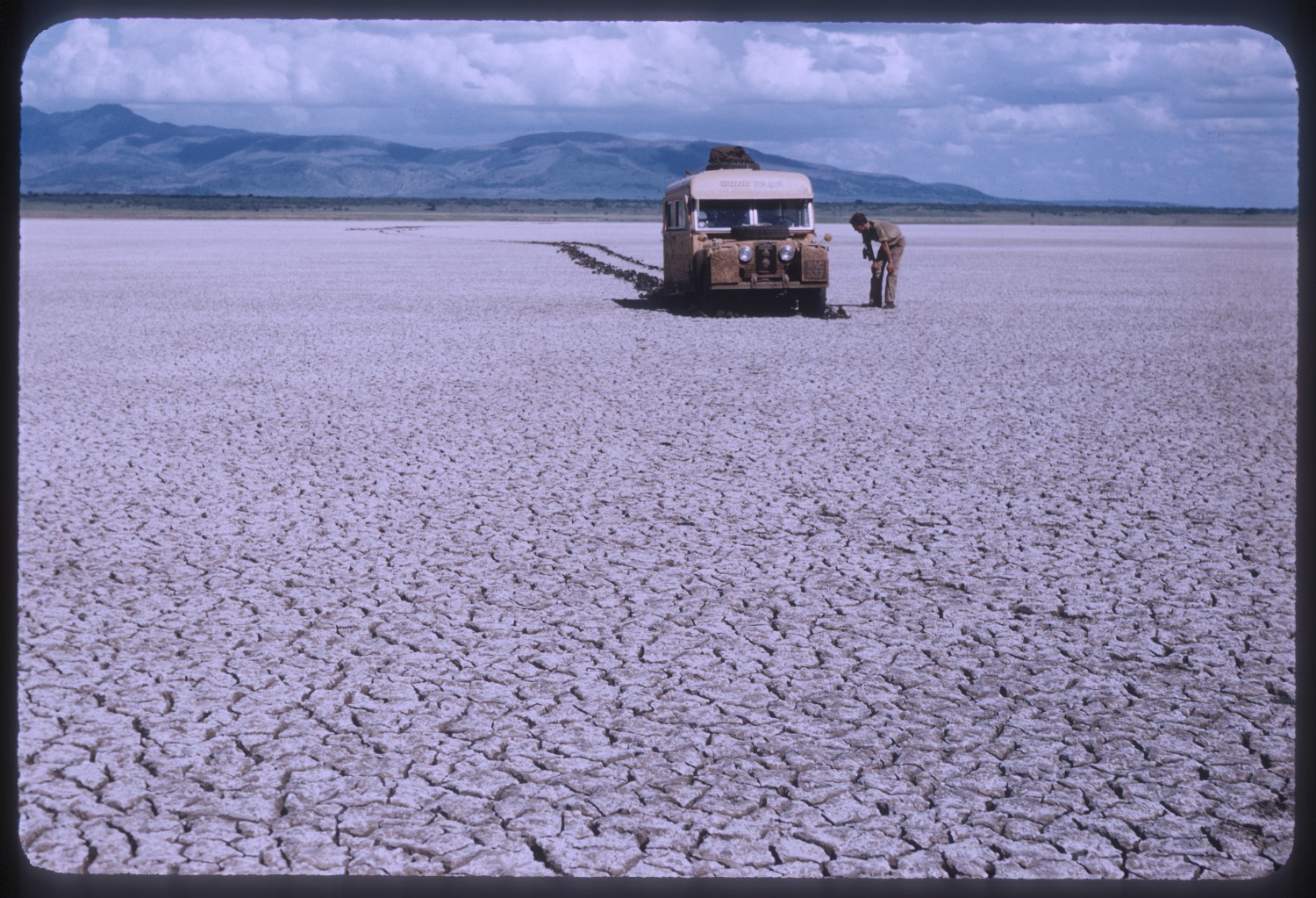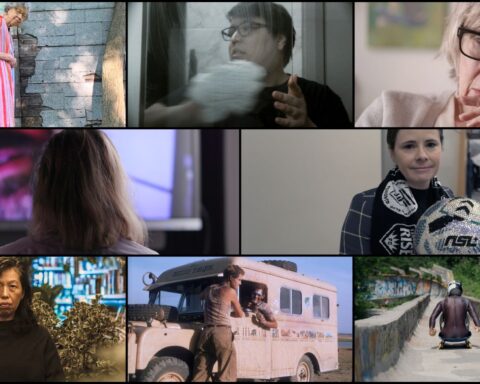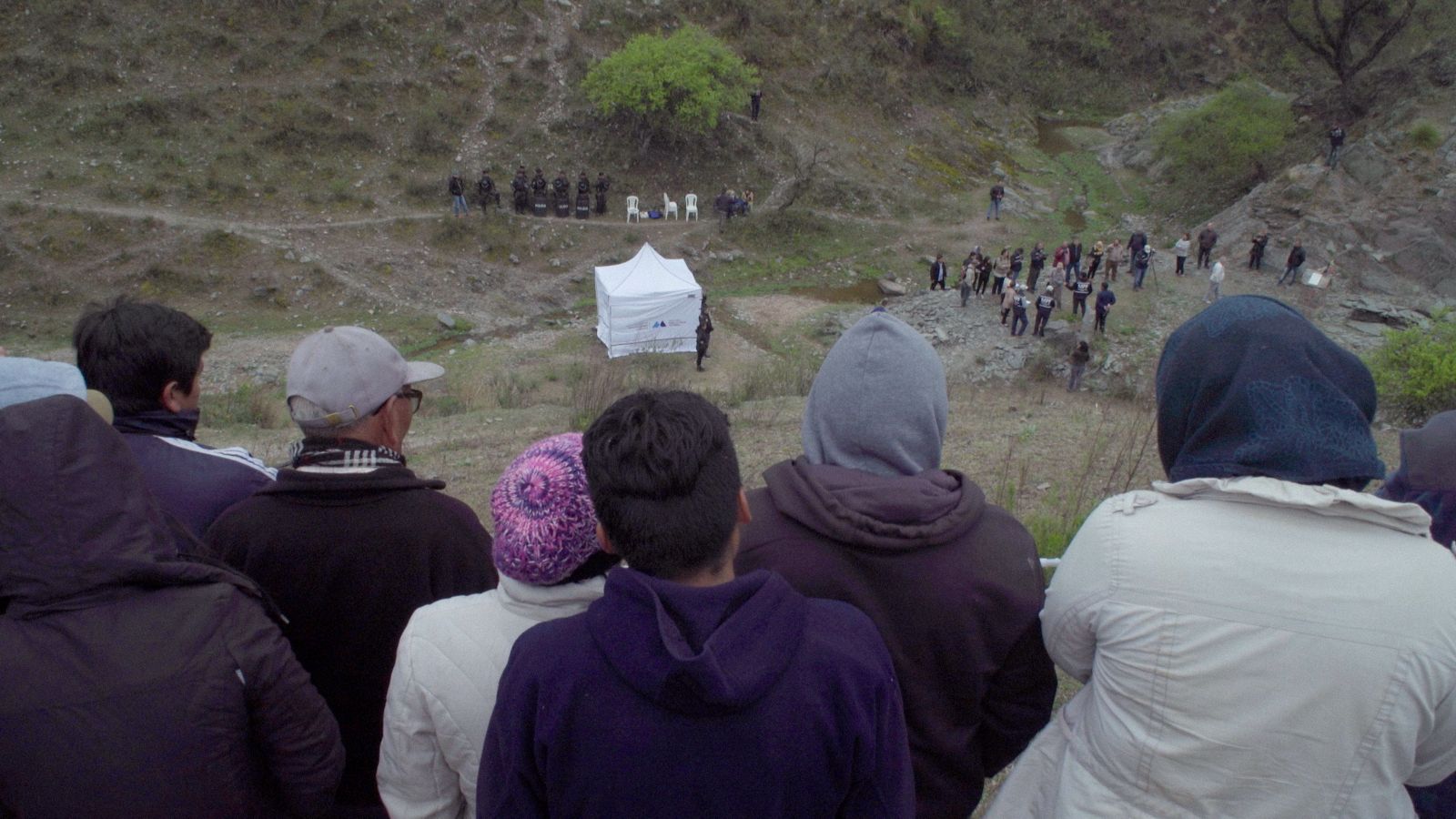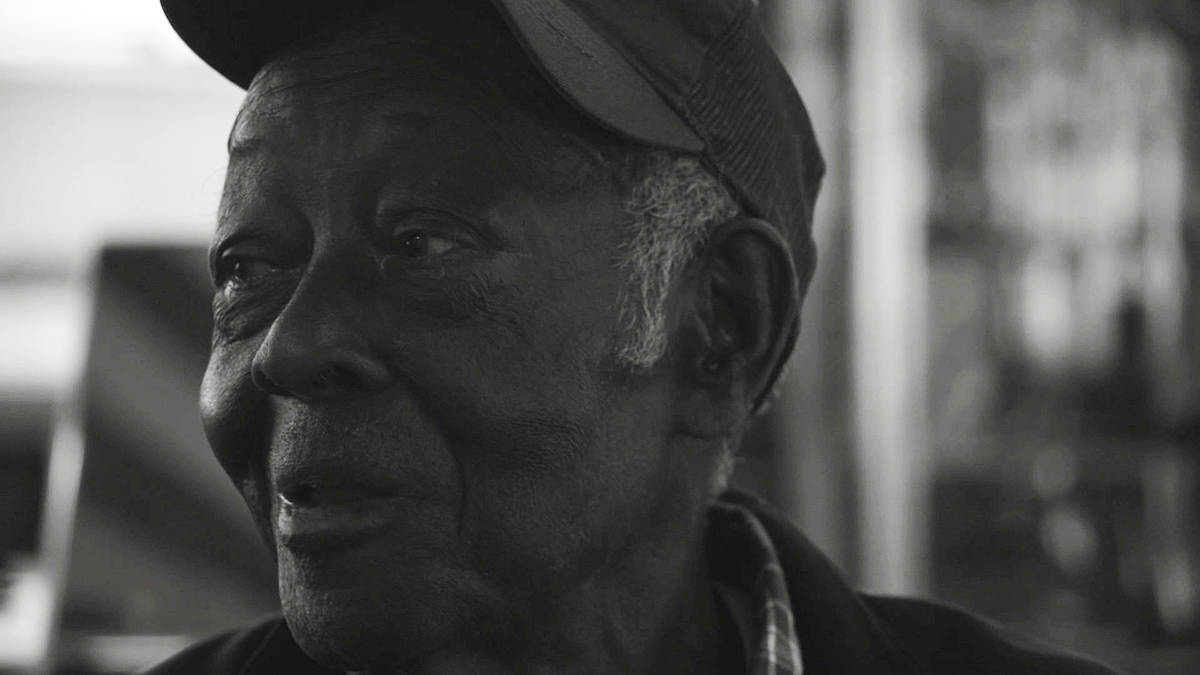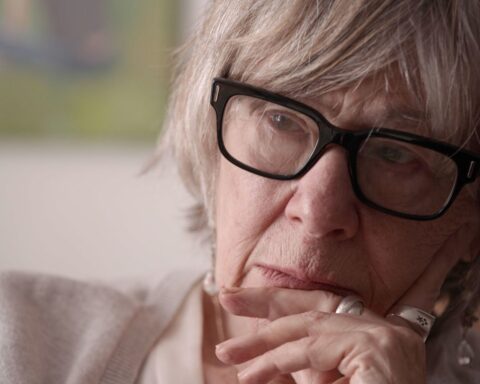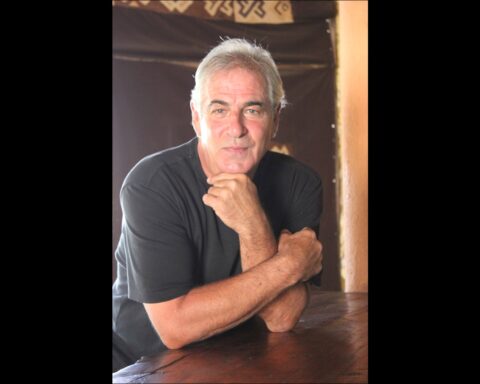Back in the late 1950s, two friends set off on an epic quest. School chums Robert Bateman and Bristol Foster clambered into their custom Land Rover, charmingly dubbed the “Grizzly Torque,” and set off on a months-long journey to circumnavigate much of our planet.
Over a half century on, the two friends gather to tell tales of their 14,000+ kilometre journey, reminiscing about the remarkable sights and people they encountered, and reflecting upon a youthful jaunt that continues to captivate to this day. Alison Reid’s The Art of Adventure, which has its world premiere at the Vancouver International Film Festival, employs archive footage that Bristol shot during their trek, and features many of the works of art that Bateman painted while bumping along the treacherous roads.
The Art of Adventure not only is an exploration of the trip, but it’s also the story of two remarkable individuals who made massive contributions to this country in their own ways. From Bateman’s world renowned artworks to Foster’s championing of the natural world, the two men are seen to have been fully engaged by this once-in-a-lifetime journey that helped fuel the rest of their lives.The story dives deep into their family situations, including the complicated relationship between Foster and his banker father who seemed aghast at the choices of his son, but soon became a vital resource to complete the journey. The multifaceted aspects of this film, beyond the spectacular footage and grand stories of the journey, sets it apart.
POV spoke to Reid, Bateman and Foster prior to the film’s world premiere at VIFF.
POV: Jason Gorber
AR: Alison Reid
BF: Bristol Foster
RB: Robert Bateman
The following has been edited for brevity and clarity.
POV: How did this story come to you, Alison? How did you know to seek this out and start following this in this documentary?
AR: Bristol and Bob both happened to be friends of Anne Dagg, the subject of my last film, The Woman Who Loves Giraffes. They were all in the same friendship circle when they were students at the University of Toronto. Bristol actually ended up co-writing The Giraffe: Its Biology, Behaviour and Ecology with Anne, and Anne considers Bob her first boyfriend! [Laughs] I don’t think [they] actually got very far along the relationship.
RB: I took her to a dance, once. That was it, I think. [Laughs.]
AR: So when I was making the previous film, I was reaching out to Bristol and Bob for photographs to include. My partner and I were vacationing and staying in a yurt on Salt Spring Island, and I knew that this was where Bob and Bristol live, so how could I not call them and say, “Do you want to go for a coffee?” I was then invited to a lovely lunch at the Batemans, and Bristol was there. I had an instant overwhelmingly great feeling from them both. It was there I found out about all of this archival footage that Bristol shot, and all of the artwork that Bob had done.
It’s such a great story, and there were so many tools to tell it with. There are the Toronto Telegram newspaper articles, their diaries and letters, and so on. I got the same feeling when I made The Woman Who Loves Giraffes, which is that I absolutely had to make this film.
To tell you the truth, I didn’t ever want to make a documentary again! It’s so all-consuming for so many years. But I couldn’t not do this, and I’m so happy we did.
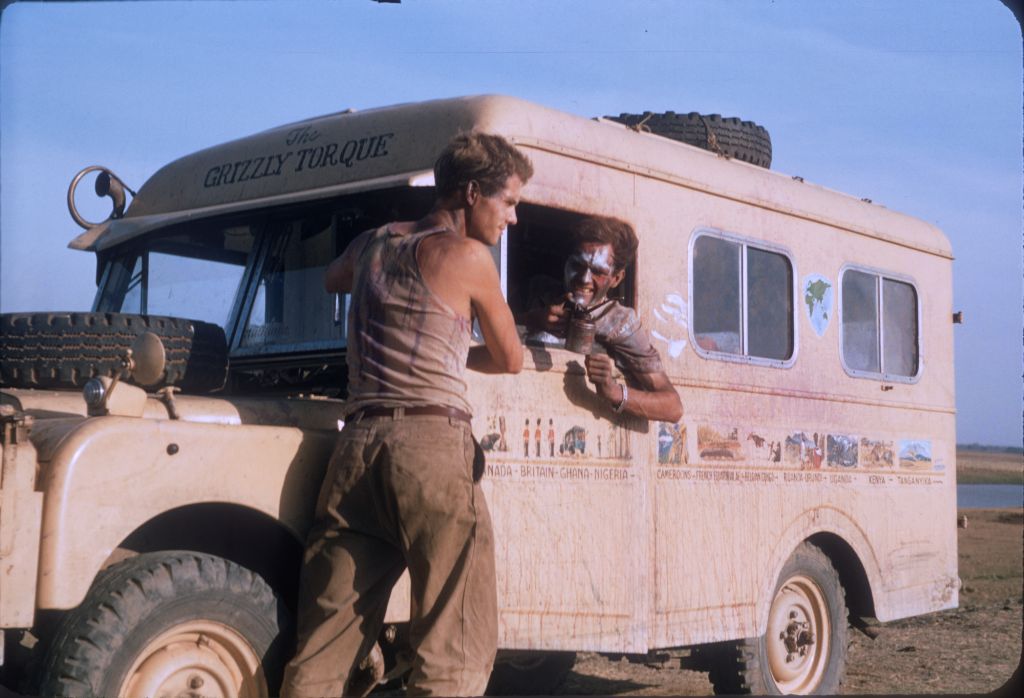
POV: Half a century ago, Bob and Bristol, you were in charge of telling your own story, you were literally typing on a typewriter in the Land Rover, you were shooting your own footage. Now, in some ways, you are telling your story, but you are also giving up a little bit of control to another director to then tell your story. I’m wondering if you could talk about navigating why this was the right time to allow someone else to tell this story?
RB: I would rather have someone else tell the story. I’ve told lots of stories, tons of stories, and I’ve got a book on my life and so it was great to have fresh eyes on it and somebody who has a different professional approach. I thought it was delightful and, particularly since we’re still alive and able to talk and appear on camera, it couldn’t have been better timing.
POV: What did you learn by watching the film of your life?
RB: I don’t know, to be honest, I don’t think I learned anything new. Bristol, did you learn anything new?
BF: Well, the trip was just a very pleasant trip. But seeing it 50 years later, it showed how close our relationship actually is. Of course, we were close for the whole trip in the Land Rover, but it’s something else to see it years later and realize that what we had done.
POV: How did the two of you avoid killing each other?
RB: Bristol is so easy to get along with. He’s almost unique that way.
POV: Bob, does that mean you’re not easy to get along with? Or just that he’s so easy to get along with it trumps everything else?
BF: He’s easier than I am!
RB: Well, we can fight over that. He always has been easy to get along with, ever since I first knew him. I can’t really explain it. It’s just the way he was brought up.

POV: What condition was the footage in, how difficult was it actually to obtain the archive elements, and how much of a struggle was it to craft a relatively linear narrative out of this stuff that has been around for half a century?
AR: This was not the first attempt to get a film about Bristol and Bob’s trip around the world out. There have been previous incarnations, several actually. I have to thank some of the filmmakers,, particularly Bill Weaver, who was in the process of making a film about this. He actually is responsible for shooting the restoration of the Grizzly Torque, and that was happening back in 2014 when I was making The Woman Who Loves Giraffes. At that time, it was going to be used for a CBC show. CBC for some reason has since lost interest.
When Bristol and Bob told me about previous attempts to make a film, I contacted Bill, and he was very generous in sharing that footage, just wanting to see this story get out there. He had already had these 16mm films from the original trip digitized. He didn’t own the footage at that stage – it’s a long, convoluted story about who did – but I managed to get the rights to the footage that Bill Weaver had shot. There’s also footage from Roger McDonell, a friend of Bristol and Bob’s, who shot them in what I call the “green tent” interview in Africa in 2010.
The nice thing as well as the hard thing in constructing the documentary is that there is a lot of footage of Bristol and Bob over the years. It always seems obvious once the film’s put together about how it should flow. Initially, we tried to weave the story between past and present, between the trip and what was happening now, and interspersing Bristol’s films. Bristol made over 30 nature documentary films, which spoke a lot to their environmental activism moving forward.
Anyway, in the end we decided that it was better to tell the trip as the trip was, which is more or less linear. We would then zone in on some particular things that happened with their careers and their environmental activism afterwards.

POV: Can you talk about stuff that maybe didn’t fit in the documentary, but over your 18-month journey, just on a logistics level before the Internet, before GPS and before credit cards, what it was like being in the middle of Africa and Asia and doing this trip? The real logistical elements, behind the scenes, that don’t necessarily make it into the film?
RB: Well, you’d be surprised at how many places in remote areas like Equatorial Africa you can get what they call petrol, or gasoline. We had a relationship with Petrofina, and another relationship with Dunlop Tires and so on, through Bristol’s influence and his fathers’. We did get free Petrofina wherever there was a Fina station.
BF: Yeah, that’s right, but there were a lot of places that didn’t have Petrofina.
RB: We had jerry cans for spare gasoline if we ever ran out, but it was never an issue.
POV: At some point in time, you have to do currency conversions, you’re having to communicate by telegram—can you talk about what it was like to travel like this half a century ago, just on a logistics level?
BF: [Holds up a book] This is Trans African Highways. This is what we carried with us and was our Bible. And so we never really got lost and here’s our whole trip right here.
AR: Wow. That’s the first time I’ve ever heard of that book! Holy cow.
BF: Oh, there’s probably a few other things that you haven’t heard. [Laughs]
POV: Did you have a pile of currency, and where did you hide it in the vehicle?
RB: We had traveller’s cheques! You’d go to the local bank and get cash with your traveller’s cheques. So that’s how we got the money.
AR: There were sponsors on the trip, and that [part] didn’t make it in the film. There’s actually a deleted scene about the sponsorship that will be on YouTube. There are so many babies on the cutting room floor that will be on our YouTube channel. So that’s some supplementary material but Fina gasoline, Dunlop Tires, and also didn’t Life magazine sponsor you guys?
RB: Yes.
AR: Did they give you some film or something?
RB: They got right of first refusal.
BF: Every now and then we’d mail back our pictures that were on the film, which you’ve seen.
POV: You guys have been back multiple times to the region, is there one place that just truly astonished you?
BF: I’m sure Bob and I would agree it would be the Ngorongoro crater in Tanzania.
RB: Yeah, East Africa in general. It’s the best place for wildlife, because we both were there primarily for the wildlife. I taught high school in Nigeria for two years, and there’s some wildlife there, but it doesn’t compare with East Africa. As Bristol says, East Africa and Ngorongoro crater. It’s the size of Metro Toronto, and it’s like a microcosm of wildlife, like the Garden of Eden actually, basically.
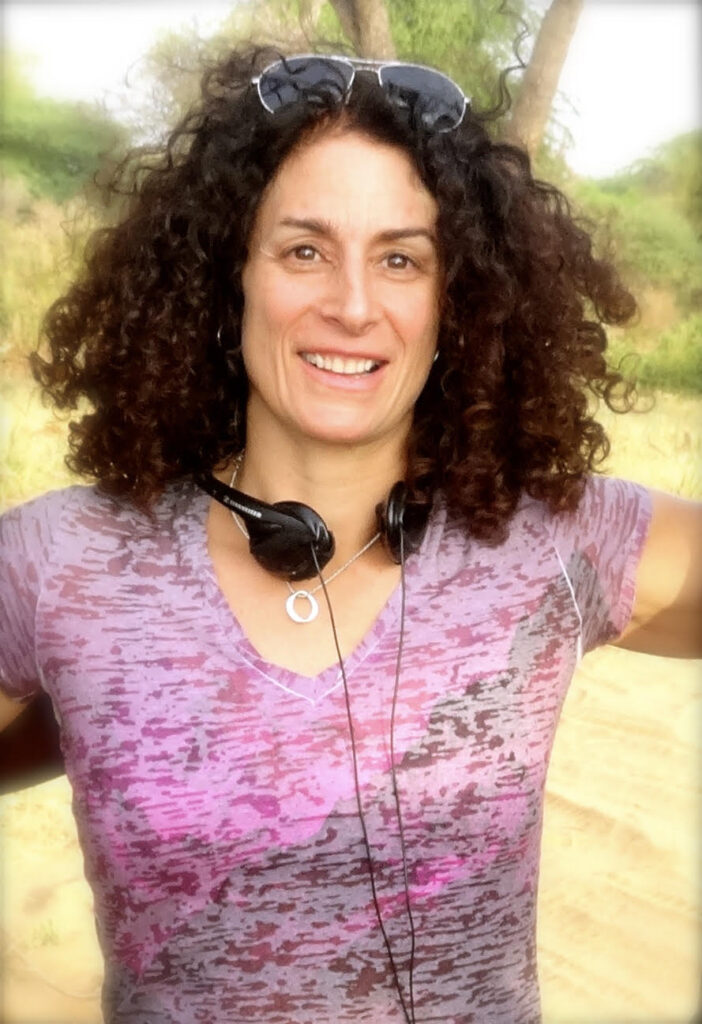
POV: Alison, obviously, you’re living vicariously through their travels. Can you imagine yourself doing an 18-month car trip with anybody?
AR: One of the many reasons I connected with Bristol and Bob is that I would love to do a trip like that. Of course, I would have to do the modern day version, and even to get off the beaten path is a challenge. All of the paths are beaten now; it would be a real challenge. That spirit of exploration and lapping up the beauty of the planet is something that I really connected with.
RB: And some of it is dangerous with rebels and that kind of thing.
AR: Absolutely.
POV: So Bob, one of the interesting things about the documentary is that it touches on something very interesting in terms of how your art has been received. In a weird and I think astonishingly Canadian way, being popular means that you’re maybe not as “effective.” Have you seen a shift in the way that your own artwork is appreciated?
RB: Well, the cross I have to bear is easily digested. I’m loved by ordinary people. It’s kind of an insulting way of putting it, but my art is loved by people who don’t take an interest in art. Most people don’t take an interest in art, and their taste may go to Picasso. Well, Picasso’s not contemporary anymore! It’s similar in music – contemporary or modern music is not appreciated by almost everybody except the contemporary and modern music aficionados, and that’s, like, one percent of the people. I can’t help it if what appeals to me is wildlife and animals and realism, and by coincidence, that happens to be digestible.
POV: You have a particular style that you’ve developed over decades, but are there artworks or times that you have done more modernist elements? Are there wacky things that we would never believe are by Robert Bateman, and are underappreciated by those that only want to see pictures of bison, etc.?
RB: Yes, there absolutely are. When I was in my early 20s, and in my formative years, I used to get together with a bunch of people to sing folk songs, two to -three times a year. I can play all kinds of folksongs, so long as they’re in the key of D. I can do D minor too!
It happened that about a third of our little group singing the folk songs was at the Ontario College of Art. They pointed out that doing naturalistic looking pictures was not really art. And so I said, “Ok, they’re at the Ontario College of Art, and so they must know.” And so I then did pretty well nothing but abstracts. I was cubist for quite a while. And I enjoyed it, and I still respect Picasso’s cubism. I like my cubism of that period. But that was a little thing that came and went. Most of the stuff that was avant-garde contemporary was a little flash in the pan, which was nice to have, and it’s flashed and it’s over.
Now, I look upon it as that it’s like a river flowing along. You had the age of Enlightenment with the age that came before and, then you couldn’t have had the Industrial Revolution without what came before it. Now we’re in a delta because of mass communication. There’s no way out of the delta anymore. It’s too late. Because communication is universal and you just push a button, and in a couple of seconds, you’re into everything that’s in existence around the world now and before us and even looking into the future. So those days are over. The delta’s a nice place to be, but there’s no direction. There’s no direction when you’re in a delta.
[Following our interview, a link was sent to the “Unexpected Bateman” show from 2024 that showcased some of Robert’s earliest works.]
POV: Bristol, one of the subplots of the film is the complicated relationship you had with your father. Your father was financially supportive, but not always emotionally supportive. If you had gone into banking, about what your life would have been if you had followed your father’s path?
BF: Well, if I went into banking, it would have been boring. And natural history is never boring, things are always changing. My father was very supportive once he realized I was determined to do the trip with Bob. Up until then, he was scratching his head, wondering what his is son doing driving around the world.! He was a little reluctant at first, but then he became very supportive. He had an office in Toronto where he could write people in life insurance and point out that we were travelling through Nairobi or whatever the town was.
RB: We had letters of introduction to all of these, as Bristol just said, life insurance people who then would open doors for us when we got there. We made sure we made use of it. Our experience was greatly enriched in more ways than one by Bristol’s father and his cooperation with it.
POV: I think that’s one of the central ironies here: unless your father had the political and economic connections that he had, the two of you could not have afforded to have been dreamers.
RB: I think we could have afforded it without him. As I recall, $2000 was what it cost me.
AR: That’s right, $2000 each, but the purchase of the Land Rover was the big thing, but I think Bristol paid him back later on.
BF: The Land Rover, we got a special body on it, it was an ambulance body with two deluxe beds in it. It had cupboards and that was our home for a year and a half. And we were so lucky to have it.
AR: The theme of fatherhood is so important. I didn’t have a good relationship with my dad. I remember at some point being in therapy and telling my therapist that my mother was the be-all and end-all of my life and my father was sort of a non-issue and didn’t really affect me at all, and she just laughed out loud.
One of the many things that I appreciate about Bristol and Bob is they both became fathers who did a much better job of fathering than their fathers did. They took their families to Africa and all of these incredible journeys, showed them, taught them, and were just such involved beautiful fathers. The one thing that struck me when I showed Bristol a very early version of this film he said, “I wish my father could have seen that.” So I guess that’s one of the psychological reasons why I was drawn to making this film maybe.
BF: In the meantime, we had perfect mothers.
AR: Yes, so did I [All laugh.]
POV: Alison, this has obviously been quite a journey for you, can you talk about what it means to you to play this in Vancouver, but what it means to you to become so close to these two adventurers themselves?
AR: I could not be happier to be premiering in Vancouver. This is where Bristol did his research, and where he formed those ecological reserves. Bristol and Bob are both so well loved and cherished in B.C. It’s the perfect place to premiere. We’ll also be screening shortly after that on Salt Spring Island, which will also be awesome.
POV: So, who snores the loudest?
BF: Oh, neither.
RB: I don’t remember snoring being an issue.
BF: We’d listen to the wild sounds at night and there were lots of noises out there outside the Land Rover, we always parked in the wildest spot we could find and hardly ever in town.
RB: Hyenas make hideous sounds. They laugh and giggle in a sinister kind of way. So it’s just the night noises of nature in the area where we lived, not snoring.
POV: Can you give me some story where at some point in time you just thought the other person was being a pain? Give me one moment in 18 months where the two of you just disagreed about something, and then I’m going to believe you’re a little bit more human than you are.
BF: Well, I believed that porridge should be cooked. And Bob believed it should be raw, just out of the bag raw.
RB: Raw oatmeal, which is not good for you. And Bristol’s porridge was slimy and I would just as soon eat raw oats, so we disagreed on that.
BF: And that was it!
